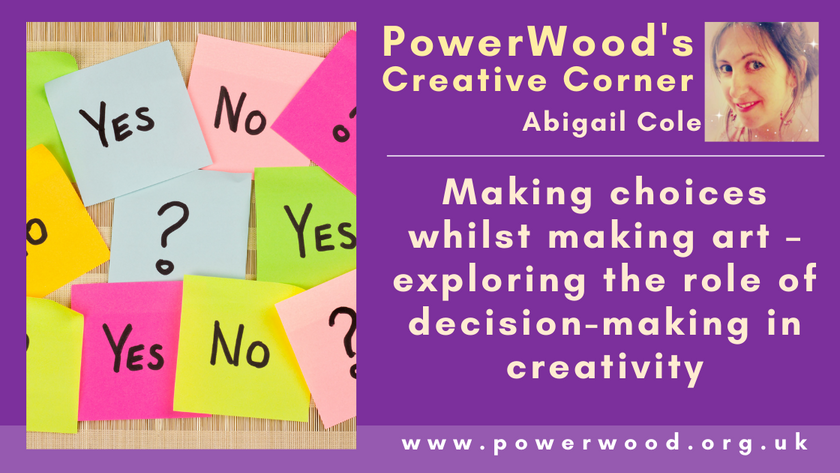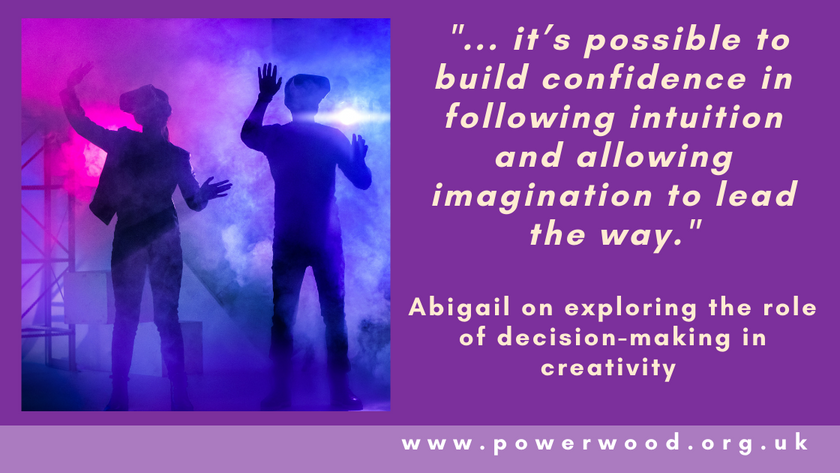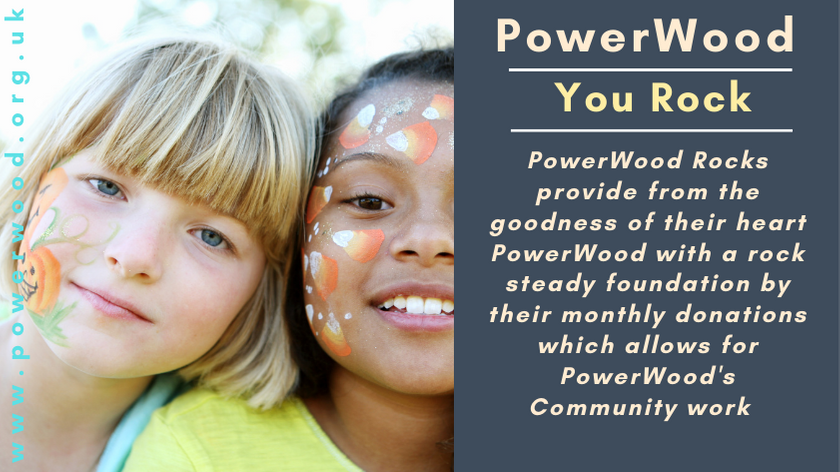
I wanted to write this post because it’s been something that I’ve become aware of and quietly pondered over the last few years, as I have transitioned more from crafting and making as a kind of hobby and side-gig (enjoying plenty of flow states!) – to working more full-time, supplying different organisations – I’m constantly making creative decisions and choices! From designing a collection of fairies for a particular shop or event to kids art community workshops & films – I have to make decisions on what we’ll make and decisions on the steps that help clearly explain it, and so on – all the while bringing the ‘elusive magic & mystery’ of art making to greater consciousness and logic.
Then more recently, I coordinated an Arts Council funded art project with Paganhill Community Group – and noticed that there was at times, a real tension in the overall execution of the project, between allowing the traditional artistic process (of following intuition, trusting the flow, letting it unfold etc) and needing to meet the overall project aims and involve a number of people; there was a lot of project management alongside the creative process!. Here my own blog post of our project – it was really beautiful!
While working on this community art project, which at every stage in the process, required different kinds of decisions to be made, I noticed more and more how children are constantly making choices as they create and, as I have found for myself, I wondered about that being a growth opportunity and benefit of creativity.
Between the artists and other community members involved in our project, we had to make bigger strategic kinds of decisions about our overall goals, including how we wanted our final artwork to look, it’s size, the materials we would use and so on, and then within the work itself there were all kinds of seemingly smaller decisions to make; what colours to use together, the type of materials, techniques and stitching to use (we were working with fabric, wool & felt), how to make certain items and when it came to the final composition, what to put where, and the timing of the project. At its simplest level, and certainly watching the children at work, it was about making quite straightforward choices – for example, colours and textures that we like the look and feel of together, but on another level, there was an element of risk taking in the committing (or not) to the decisions we made – for example, once a precious piece of beautifully hand-dyed fabric is cut, there is no going back!
As the process of the project went on, I thought more and more – and noticed in all our other projects too – about the role of decision-making in creativity, and how having regular creative experiences can help with practising decision-making and possibly contribute to a greater confidence in the deciding process. Having lived through such uncertain times of late, anything that helps with creating a greater sense of ‘knowing’, and a feeling of trust in the decisions we make, can only be a good thing.
Different decision-making styles
Sometimes, many of the decisions about the creative direction of a project can be made right at the beginning. This could be the stage of the process where a design is put down on paper by drawing out all the different elements, possibly adding labels and notes where necessary. Or it could be looking at a tutorial for a project, digesting all the steps, thinking how you want to interpret it or what you want your own touches to be, for example, what colours you use, and then executing all the steps one at a time, according to the plan. Craft kits are a good example of this – the big decision at the start might be which kit to buy – what is it that you want to make next and how you will make it. I’ve also seen children working with clay, or painting pre-made pottery items, where some children will pause before they start to think about what they will make or design their colour scheme up-front and then set about creating their design, whilst others will launch straight in and find their way as they go along, not necessarily knowing what their creation will be or look like at the end, when they begin.
This second approach is often associated with more open-ended projects or creative activities; things like junk modelling lend themselves very well to making decisions after the process has already started and as you go along. Sometimes however, it seems to me that it’s not necessarily the project or creative activity that determines the kind of decision-making process an individual will choose, as personal preference; my daughter will often tell me that she will know what she is going to do (on a creative project) once she is doing it, even if she doesn’t know what she will do before she starts. On one level, there is an element of uncertainty involved in this approach, as there is the inherent possibility that the creative risks taken might not pay off – an experiment might not turn out the way it was visualised, certain materials might just not work for the purposes they are being used for, and so on… but on the other side of that, there is every possibility of wonderful discoveries, creative surprises, and things coming together in ways that you didn’t know were possible before… I also think that this approach has the potential to develop a sense of trust in the not knowing and allowing decisions to come from the process itself, sometimes experiencing flow, a mental state in which we are fully immersed in what we are doing, experiencing a feeling of energised focus, full involvement, and enjoyment in the process of the activity.

Building confidence through creative decision-making
Making choices as you go along seems to involve an element of intuition, and the confidence to follow a hunch, listen to the pull of curiosity, and draw from your own senses about what it is you would like to create. It can take courage to trust that things will unfold in a pleasing way, even when you don’t precisely know the destination from the outset. It can be difficult to explain this more intuitive process to others (especially in the context of school or more prescribed, time-bound projects where certain outcomes or learning objectives are the goal) – often there’s a loose sense or an image of what you want to make but no clear ‘plan’ of how to get there, but you know that you will – certain choices and decisions will need to be made, and that they will emerge from other choices as they are made. I’m often asked by my daughter “what shall I draw?” or “what shall I make?” – I guess coming from a sense or feeling of wanting to draw something and having not yet chosen or decided on her subject matter – indeed, I think getting started can be one of the trickiest parts of this more intuitive approach. I don’t always have an answer when I’m asked this, but I do have a sense that once the initial decision is made, the ideas will begin to flow and that this kind of process is great for encouraging exploration and playfulness in creativity, and I think by making the space and time for open-ended creative processes, it’s possible to build confidence in following intuition and allowing imagination to lead the way.
Both approaches are entirely valid and can build confidence. Quite often, artists/creators will describe the experience of receiving idea ‘downloads’; the image or idea of a creative project (whether it is music, writing, something handmade, a painting), will just appear to them almost fully formed, they can see, hear, or feel it fully, and it is their job then to grab hold of the idea to bring it into reality. It can be very energising to receive creative ‘downloads’ as they often come with a kind of urgency to bring them to life – and it’s almost as if they have an inherent blueprint or plan of execution – even when in reality, they rarely come with an instruction manual! And even though the idea ‘downloaded’ so clearly can feel like the basis of a plan – many decisions will still have to be made on how to turn the vision into a reality. It can be very rewarding and confidence building to see all of those decisions coming together to realise an idea, and if you do decide to make all the choices up front there is often an element of logic and rational thinking and planning involved. Using a more planning-based approach to creative tasks can be a great way to develop those skills too.
The biggest decision of them all
Sometimes things can look like they are going off course with a creative project, or not working out according to plan or the original creative vision. One of the biggest decisions then, can be to keep going or abandon it! No effort is truly wasted, because it’s always possible to learn from the things that don’t work out… but it sometimes doesn’t feel like that at the time, and in reality, it can feel very disappointing to stop working on something we have already invested energy in. There is always the decision to press on, but it can feel like even more of a risk… What if more time and effort is invested and it still doesn’t work out? Invariably, though, if you do manage to rescue the project, and steer it back on course with the decisions you make – it can be deeply satisfying and rewarding to have made it to the end…
Knowing or deciding when a piece is truly finished, might be an even bigger decision, and something that becomes easier with experience. Sometimes it’s just a ‘knowing’ or a feeling that something is finished, and sometimes it is more logical – all the steps have been completed, or the colours that were chosen harmonise in a specific way, or the stitching is just right and everything holds together with strength and integrity… committing to this final decision can be tricky, but undoubtedly one of the most rewarding moments, knowing that a project is done and trusting in your decision.
Creative conviction & confident choices
Even the simplest of creative sessions with very young children can be a good exercise in decision making. For example, young children might sit with an adult to make a collage, or explore mark-making with paints; even if the adult is doing much of the cutting/sticking/painting, little ones can still be involved in, and indeed often really enjoy, pointing out the colours they like and which one goes next and so on. Often, they will change their minds many times over and approach making choices very playfully, with so many outcomes seemingly delightful.
Often creative projects can unfold and choices are made almost subconsciously according to our preferences and we might almost not even be aware that we are in fact making so many decisions all the time… but whether or not we are aware that we are making decisions doesn’t necessarily matter – all kinds of creativity and creative projects at home can still facilitate confidence in making choices and decisions. It might even be something to focus on when giving feedback about a child’s art work – e.g. “I love how you decided to use blue and yellow together like that as it makes me think of summer”, making confidence-boosting comments that are specific and meaningful. As a new term of learning (either formal or informal) unfolds, it’s great to think of all this ‘hidden’ learning taking place through creative endeavours as well as all the lovely creations we have to show for them at the end!
© 2022 Abigail Cole
For more creative ideas visit PowerWood’s creative corner by Abigail and Abigail’s own creative website: www.forgetfulfairyartstudio.com
Help us to continue support to all neurodiverse families and individuals
PowerWood offers to neurodiverse families understanding, simple tools and strategies that enable us to support ourselves and our children through emotional overwhelm. If you enjoy reading the articles please support PowerWood making all information available to all by becoming a PowerWood Community FreeBee or Friend member. Thank YOU!

